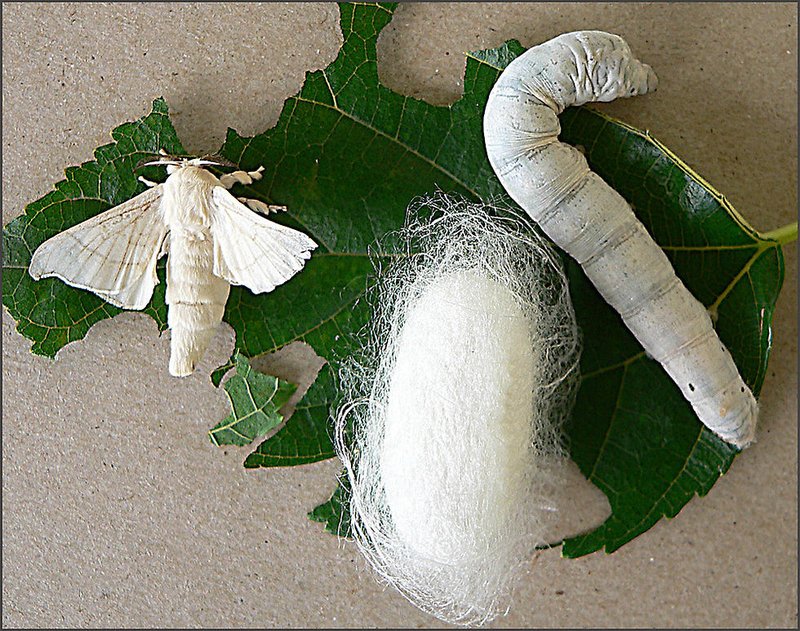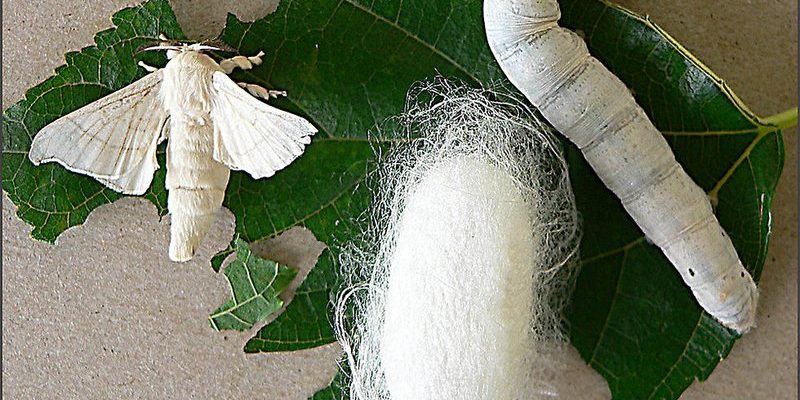
Silkworms, scientifically known as *Bombyx mori*, are the unsung heroes behind silk production. They start off as tiny eggs that hatch into larvae, munching on mulberry leaves like they’re at an all-you-can-eat buffet. Once they’ve had their fill within a few weeks, these larvae spin cocoons around themselves, entering an intriguing phase that can last a bit of time. So, let’s explore what happens during this period, how long it lasts, and why it’s crucial for their development.
The Lifecycle of Silkworms: A Brief Overview
When talking about silkworms, it’s essential to understand their complete lifecycle. It consists of several stages: egg, larva (caterpillar), pupa (cocoon), and adult moth. After hatching from the egg, the larva undergoes several molts, growing rapidly as it feasts on mulberry leaves. This green diet is what allows them to build up the energy they need for the next phase.
The transformation into a pupa happens when they spin their cocoons. This is a fascinating process and vital for their survival. The cocoon acts like a protective shell, shielding them from predators and environmental threats. It’s a bit like how we bundle up in warm clothes during winter!
You might be wondering, how long do they remain in this cozy stage? Well, it varies depending on a few factors. Typically, the cocoon phase lasts anywhere from **10 days to 21 days**. This might seem short, but it’s indeed a significant time in their lives.
The Cocoon Phase: What Happens Inside?
Once a silkworm has spun its cocoon, it enters a stage called the pupal phase. During this time, it’s not just snoozing away. Inside that cocoon, incredible changes are happening. The larva is transforming into a moth, which involves a lot of cellular restructuring. This is like a teenager going through a growth spurt; it’s messy but critical for development.
The **silk cocoon** itself is made from a single long thread of silk protein, which can be several hundred meters long! This silky material is what makes silkworms so valuable in the textile industry. After the pupal stage is complete, the adult moth is ready to break free from the cocoon, marking the end of its significant transformation.
The timeline of this stage can be influenced by temperature, humidity, and nutrition. Warmer temperatures often speed up their development, while cooler temps can slow it down. It’s nature’s way of ensuring they only emerge when conditions are just right.
Why Do Silkworms Spin Cocoons?
You might wonder why silkworms don’t just skip the cocoon stage altogether. It turns out that the cocoon is essential for their survival. The cocoon acts like a fortress, protecting them during their most vulnerable moments.
Without this protective layer, the pupae would be easy targets for predators like birds or insects. Think of it as their very own superhero cape that grants them a moment of safety while they undergo such a dramatic life change. Plus, the cocoons are also water-resistant, ensuring that the developing moths stay safe from moisture and other environmental hazards.
Aside from protection, the cocoon helps in the silk production process. When farmers harvest silk, they actually unravel the threads from the cocoon, which can yield anywhere from 300 to 900 meters of silk from a single cocoon! Pretty amazing, right?
How Long Do Silkworms Stay in Cocoon Form?
As mentioned earlier, the time spent in cocoon form generally ranges from **10 to 21 days**. But why such a range? Well, various factors play into this timeframe:
- Temperature: Higher temperatures tend to accelerate the metamorphosis process, while cooler temperatures can prolong it.
- Humidity: Proper humidity levels are crucial for the silkworms to thrive. Low humidity can cause stress, affecting their development.
- Nutrition: If the silkworms have had a healthy diet during their larval stage, they are likely to transition smoothly and promptly into the pupal stage.
When conditions are optimal, you can expect that your silkworms will change into moths sooner rather than later. However, keep in mind that rushing this process can lead to weak moths that might not survive for long.
The Importance of the Cocoon Stage in Silk Production
The cocoon phase isn’t just important for the silkworm’s lifecycle; it’s crucial for the silk industry, too. After the moths emerge, they mate, and the females lay thousands of eggs to continue the cycle. But here’s the catch: if they are allowed to emerge from the cocoon, the silk production is halted.
This is why many silk farmers harvest the cocoons before the moths break free. By doing so, they ensure that they can extract the silk efficiently. While it may seem harsh, it’s a necessary step in maintaining the silk industry, which is a major source of income in many regions.
Caring for Silkworms During the Cocoon Stage
If you’re thinking about raising silkworms, caring for them during the cocoon stage is key. Here are a few tips to ensure they thrive:
1. **Maintain Proper Humidity:** Silkworms prefer a humidity level of around 60-70%. Using a humidifier or misting can help.
2. **Ensure Temperature Control:** Aim for a temperature between 75°F to 85°F. Too hot or too cold can hinder their development.
3. **Limit Handling:** Once they are in their cocoon, try not to disturb them. Handling can cause stress or damage to the cocoons.
4. **Keep an Eye Out for Pests:** Ensure the area is clean and free from pests that might eat the cocoons.
With proper care, you’ll have a successful batch of silkworms and a healthy silk harvest to show for it!
Understanding how long silkworms stay in cocoon form gives us a glimpse into the wonder of their transformation. Typically ranging from **10 to 21 days**, this phase is essential for their growth and the silk we cherish. By nurturing these little creatures, we not only support their lifecycle but also play a part in the rich history of silk production.
Whether you’re a curious beginner or someone considering raising silkworms, knowing their needs during the cocoon stage can make all the difference. So, next time you see a silkworm cocoon, remember that inside lies a world of change and potential waiting to break free!

